What is Circadian Rhythm?
The circadian rhythm can be understood as the body's built-in timing device. Circadian rhythm is the internal cycle of 24 hours in the human body, governed by our biological clock. This biological clock in our brain regulates our multiple internal systems 24 hours a day, including sleep and eating habits, hormone secretion, body temperature, sensitivity, mood, and digestion, in line with the earth's rotation. In layman's terms, the body naturally knows what it wants to do at different times of the day. For example, at nine o'clock at night, the brain begins to secrete melatonin, and the body automatically initiates a sleep ritual.

Dysfunctional Circadian Rhythms
Maintaining a normal circadian rhythm can be challenging, primarily due to the indoor lifestyle. Our bodies haven't evolved to adapt to modern technology, and our brains can't distinguish between daylight and artificial light. Using a screen at night confuses our brains because it signals us "daytime" when it's time to sleep. Conversely, not getting enough light during the day can make us feel lazy and sleepy. It is important to note that circadian rhythm disruptions can negatively affect health and manifest symptoms of premature aging, as well as metabolic and immune disorders. Unfortunately, recent studies have shown that 80% of modern people have circadian rhythm disorders of varying degrees. Long-term sleep disorders can also induce a variety of physiological diseases, such as hypertension, coronary heart disease, diabetes, cancer, etc.
Red Light Therapy for Circadian Rhythms
Red light therapy has been shown as a safe, effective, and easy-to-use non-pharmacological intervention for circadian rhythm improvement and treatment. It is also known as low-level laser therapy and uses visible and near-infrared red light (630–850 nm) from artificial light sources to prevent and treat diseases. Red light therapy may benefit circadian rhythms and feelings of rejuvenation through the mechanism of "photobiomodulation." When soothing red light enters the eyes, it transmits light through the retina to the suprachiasmatic nucleus (SCN), the rhythm center, and the pineal gland to stimulate the secretion of melatonin (sleep hormone).

Red Light Therapy as a "Melatonin" regulator
The discussion of circadian rhythm is inseparable from melatonin, an amine hormone secreted by the brain's pineal gland under physiological conditions. It is closely related to various physiological activities, such as the central nervous system, reproductive system, immune system, etc. Melatonin regulates the sleep cycle, has obvious hypnotic properties, and improves sleep quality and insomnia. Ambient light intensity and wavelength are important external factors that regulate melatonin concentrations in the body. The order of the inhibitory effects of light wavelengths on melatonin synthesis is blue light>green light>yellow light>ultraviolet>red light. When the wavelength of light is greater than 600 nm, the inhibitory effect of light on melatonin is minimal, while the wavelength band of red light is between 630-780nm. When the light is strong, the melatonin secretion is less; when the light is weakened, the melatonin secretion increases. Studies have found that red light has a relatively weak inhibitory effect on melatonin, so individuals are prone to quickly falling into a deep sleep state after being exposed to red light for a while. Therefore, red light therapy can promote melatonin secretion, and there is a positive correlation between melatonin and sleepiness. Sleep quality affects our mood and work quality throughout the day, and good sleep can lead to a healthier body.
Red Light Therapy Fixes "Jet Lag"
Jet lag is a circadian rhythm sleep disturbance that manifests as excessive daytime sleepiness, decreased physical function, and gastrointestinal discomfort after a change in sleeping schedule. Frequent jet lag can cause more significant damage or load to the internal organs and even irreversible damage. Melatonin is the most studied drug used to treat jet lag by affecting the phase of circadian sleep, and randomized controlled studies have shown that travelers taking melatonin have significantly improved symptoms of jet lag compared with the placebo group. Melatonin side effects include daytime sleepiness, dizziness, headaches, and the loss of appetite.
Unlike the drug's adverse effects, exposure to red light therapy in the evening can naturally help with jet lag as it mimics responses similar to the sun to signal melatonin release and can prepare the body for rest. Daytime usage of red and near-infrared light may support energy and alertness. The red light shows promise for regulating the internal clock and addressing issues like jet lag or shift work disorders for a rejuvenating effect.
When should you use red light therapy to improve the biological clock?
Red light therapy to enhance circadian rhythm functions depends on your ultimate goal. Whether you are trying to increase wakefulness and alertness during the day or need relaxed sleep at night, here are some suggestions:
- Morning/Daytime use – Aim for a 20–30 min session to boost alertness and mood after waking up.
- Evening/Nighttime use – Sleep aid/soothing lighting before bed. After the overuse of electronic products such as mobile phones and computers at night, turn on the warm red light mode to relieve the tension after overconcentration and help you fall asleep.
- Jet Lag or Shift Work – Use red light therapy twice a day, in the morning or evening, strategically to reset your circadian rhythm.
Bottom Line
In short, red light therapy positively impacts a person's mental and physical state! It is a practical and simple way to get more red light at ease if you want a healthier circadian rhythm, peaceful sleep, and a soothing mood. For best results, it is recommended to use Bestqool red light therapy consistently to rejuvenate your biological clock and reduce the blue light exposure time.
References and Citations:
[1] Vitaterna MH, Takahasshi JS, Turek FW. Overview of circadian rhythms. Alcohol Res Health. 2001;25(2):85-93. PMID: 11584554; PMCID: PMC6707128.
[2] Giménez MC, Luxwoolda M, Van Stipriaan EG, Bollen PP, Hoekman RL, Koopmans MA, Arany PR, Krames MR, Berends AC, Hut RA, Gordijn MCM. Effects of Near Infrared Light on Well-Being and Health in Humans with Mild Sleep-Related Complaints: A Double-Blind, Randomized, Placebo-Controlled Study. Biology (Basel). 2022 Dec 29;12(1):60. doi: 10.3390/biology12010060. PMID: 36671752; PMCID: PMC9855677.
[3] Peng J, Zhao J, Tang Q, Wang J, Song W, Lu X, Huang X, Chen G, Zheng W, Zhang L, Han Y, Yan C, Wan Q, Chen L. Low intensity near-infrared light promotes bone regeneration via circadian clock protein cryptochrome 1. Int J Oral Sci. 2022 Nov 14;14(1):53. doi: 10.1038/s41368-022-00207-y. PMID: 36376275; PMCID: PMC9663728.
[4] Rizza S, Luzi A, Maviilio M, Ballanti M, Massiimi A, Porzio O, Magrini A, Hannemann J, Menghini R, Cridland J, Staels B, Grant PJ, Boger RH, Marx N, Federici M. Impact of light therapy on night shift workers: the EuRhythDia study. Acta Diabetol. 2022 Dec;59(12):1589-1596. doi: 10.1007/s00592-022-01956-2. Epub 2022 Aug 31. PMID: 36044097; PMCID: PMC9430001.
[5] Santanaa-Blank L, Rodríguez-Santana E. Photobiomodulation in Light of Our Biological Clock's Inner Workings. Photomed Laser Surg. 2018 Mar;36(3):119-121. doi: 10.1089/pho.2018.4445. PMID: 29649380; PMCID: PMC5863078.







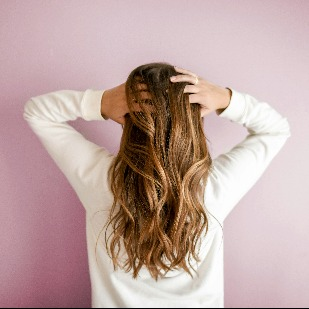
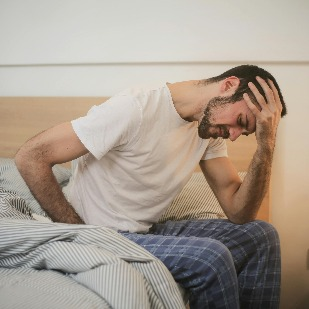
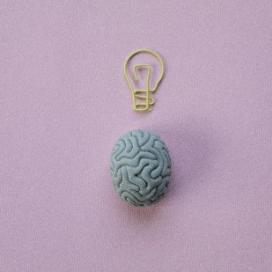

 Small
Small

 Moderate
Moderate
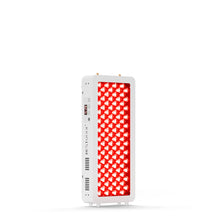
 Moderate
Moderate
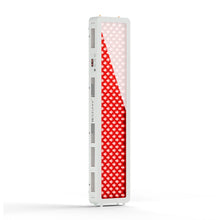
 Moderate
Moderate

 Full
Full



